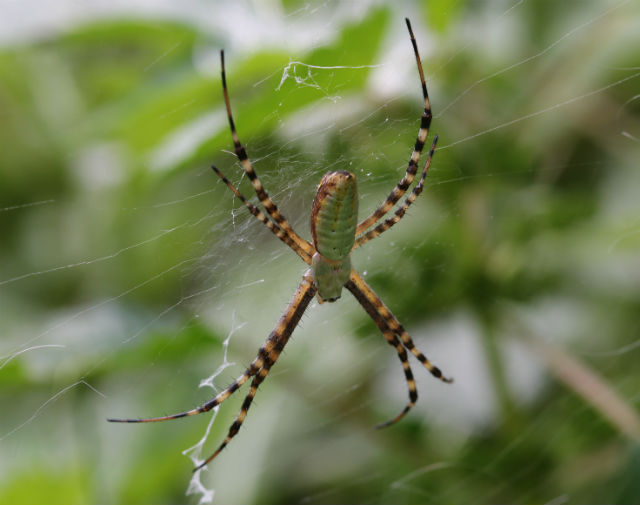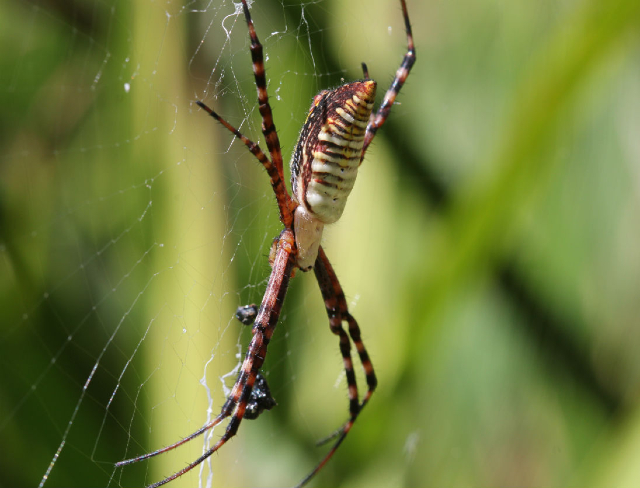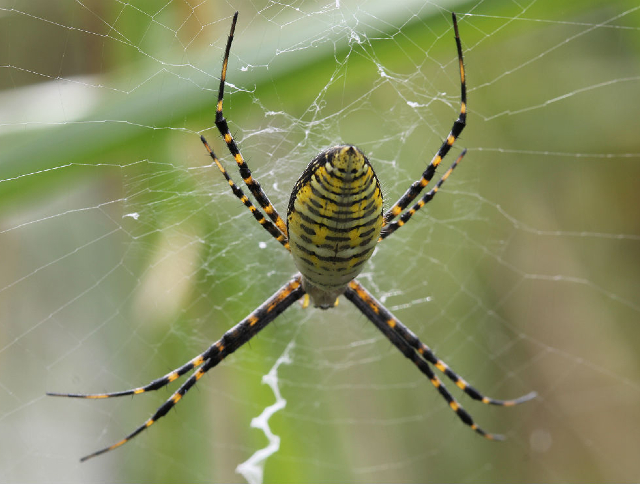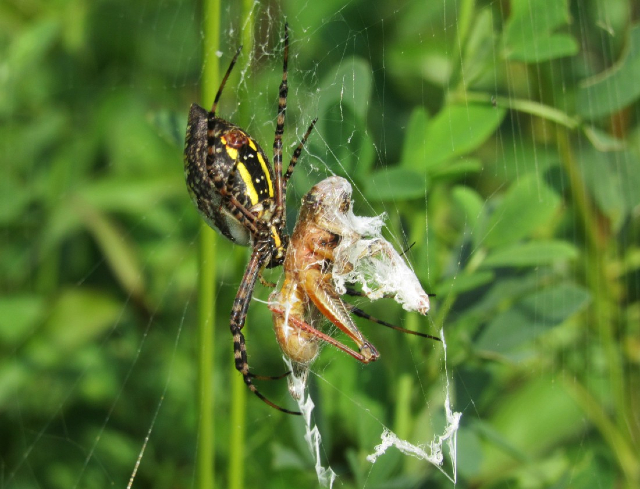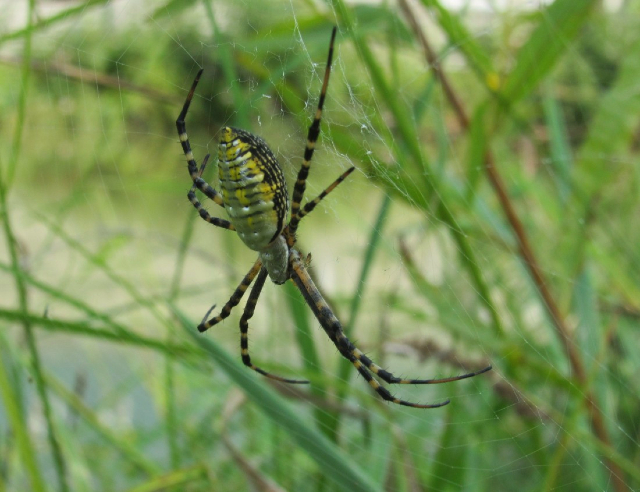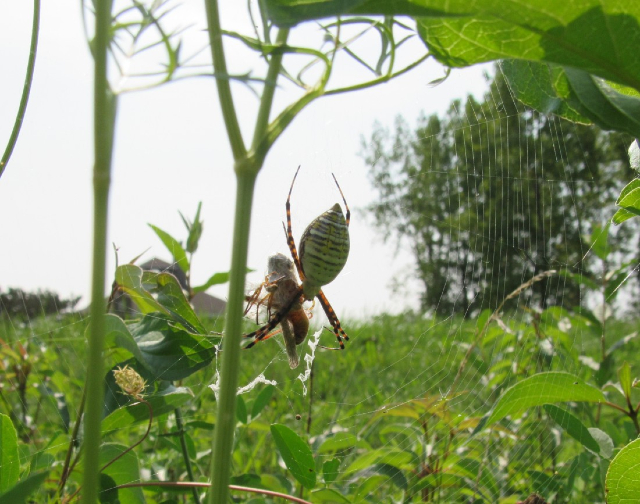This is a neat spider that I have not only found while out and about, but also have occasionally seen in my backyard. For me, Banded Garden Spiders are not as commonly encountered in Ohio as Black and Yellow Garden Spiders, although they inhabit similar locations.
This orb weaver produces a large, concentrically patterned web in areas of tall grass and shrubby vegetation. The web is strong and capable of holding fairly big and active insects like wasps and grasshoppers. The webs of these arachnids have both sticky and non-sticky silk. Non-sticky silk is used for the threads which radiate from a central point like spokes on a bicycle wheel. The spiral threads are composed of the sticky silk that captures the spider’s prey.
A behavioral study of web construction determined that the majority of Banded Garden Spiders orient their webs along an east-to-west axis. The spiders hang head-down in the center of the web with their abdomens facing south. Since the underside of the spider is mostly black, the position of both web and spider is believed to maximize solar radiation for heat gain, which is an important consideration for spiders that are active late in the year.
At about an inch in length (not including its legs), the Banded Garden Spider can usually be observed resting in the center of the web, although it may drop readily if disturbed. Its body’s background color is a pale yellow with numerous lateral bands of black. The legs are also a pale yellow with darker spots or bands.
Banded Garden Spiders use a “wrap-and-bite” strategy to quickly dispatch their prey. When a victim becomes entangled in their web, the spider rushes over and wraps the prey in a thick shroud of dense webbing. They it bites through the victim’s exoskeleton. The bite delivers neurotoxic venom that halts its prey’s struggling and necrotoxins that dissolve its food’s insides.
Banded Garden Spider adults can be found from mid- to late Summer through the first freeze. Their egg sacs are deposited in early Fall and consist of several hundred eggs. The immature spiders emerge the following Spring.
The Banded Garden Spider is a colorful and fascinating creature that I look forward to seeing every Summer.

